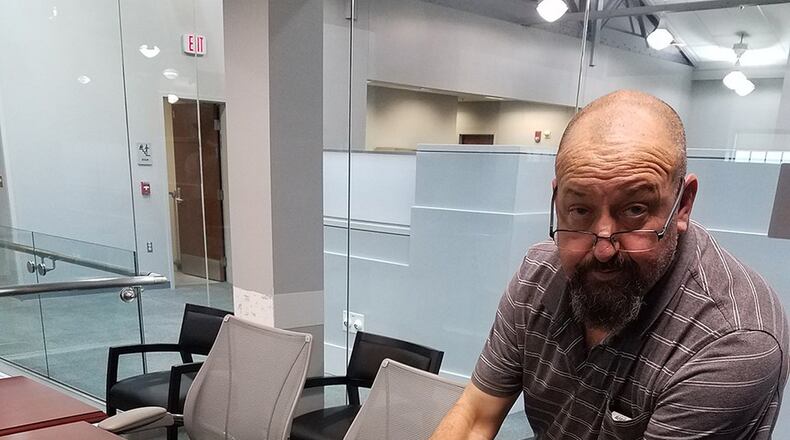This year, the division began delivering the Aircrew Mission Extender Device, also known as AMXDmax, and so far has fielded 606 of the devices with another 1,500 scheduled for delivery over the next six months.
The new devices are hands-free, battery-operated and are worn underneath uniforms. They are designed to collect urine (in a cup for males, pad for females) and pump it into a collection bag.
“Delivering and fielding the AMXDmax is a big deal,” said Lt. Col. Elaine Bryant, deputy director of the Human Systems Division. “Especially since urinary [relief] devices are the No. 1 priority that female aircrews have when it comes to mission equipment. They are a vast improvement over the legacy relief devices that many aircrews are currently using. The battery life is longer; it holds more urine; the pads are better; the cups are better and overall it’s more anatomically correct.”
A key part of the device is that embedded sensors quickly detects urine – within one second – and pumps it into the collection bag, which can hold a total of 1.7 quarts.
“What’s great about this product is that it pulls moisture away from the skin,” said Mark Bernier, program manager for AMXDmax. “With other products, often moisture stays against the skin and within eight seconds bacteria [in the urine] can start to break the skin down.”
In addition to fielding AMXDmax, the Human Systems Division is helping train aircrews in the proper usage and upkeep of the devices to improve comfort and ensure the devices work as intended.
While Air Force officials say they are excited about AMXDmax, they also say that there are slight changes that could be made to the devices.
“We recognize that there are still improvements to be made to AMXDmax,” said Bryant. “We can do better, are working to do better and are asking aircrews for feedback on the devices in order to ensure their needs are met.”
Bernier said that the Human Systems Division has a responsibility to take care of aircrews.
“I’m very passionate about what we are doing with AMXDmax,” Bryant said. “Our pilots need to hydrate when they are flying these jets, and the work we do supports that.”
Bernier also stated, “In addition to aircrew bladder relief, there are many more application for this device such as, ground troops in convoys, medical application [marathon surgery], chemical contaminated areas in theaters just to name a few.”
To provide feedback on AMXDmax or for questions about how to acquire the devices, please send an email to mark.bernier@us.af.mil.
About the Author
